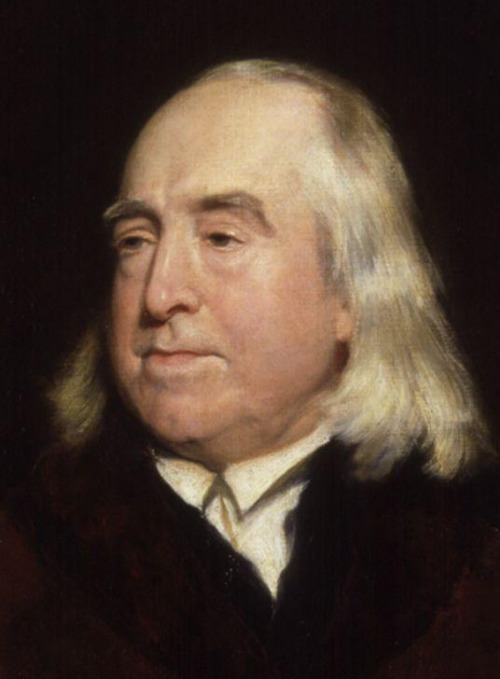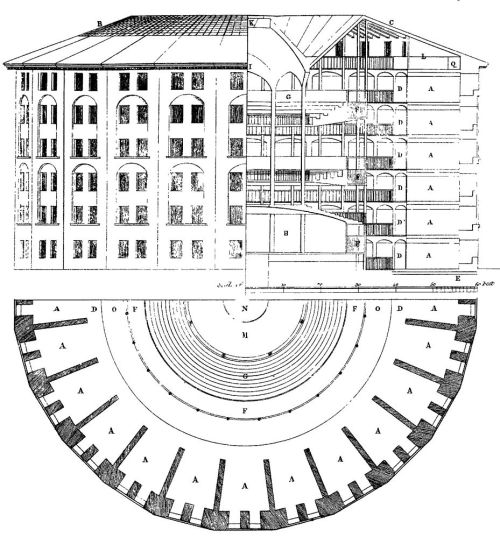Why February 15th is BRILLIANTHoly Cat, Sacred Teapot Today is the birthday of Jeremy Bentham, who w
Why February 15th is BRILLIANTHoly Cat, Sacred Teapot Today is the birthday of Jeremy Bentham, who was born on this day in 1748 in Houndsditch in London. Bentham trained as a lawyer but never practised. He is remembered as a philosopher, a social reformer and a rather eccentric gentleman. But he is probably best known for having his body on permanent display at University College London.Jeremy advocated separation of church and state, freedom of expression, equal rights for women, the right to divorce and the decriminalisation of homosexuality. He believed what people got up to in private needn’t bother anyone else. He was against slavery, the death penalty, physical punishment in general and cruelty to animals. He spent a good deal of his life trying to build a prison of his own design, that he called the ‘Panopticon’. It was to be a circular building with the cells arranged around the perimeter. The idea was that all the prisoners could be observed from a central area by a single person. Jeremy was so sure it would work, he was prepared to do the job himself. Finding a place to build it was really the main problem. No landowners really wanted a prison on their property, or anywhere near their property. He became rather bitter about it and he saw how the rich and powerful can conspire against the wider public interest for their own selfish reasons. He called it 'sinister interest’. Central to his beliefs was the idea that: “…it is the greatest happiness of the greatest number that is the measure of right and wrong”. By happiness, he means that the pleasure outweighs the pain. To decide whether a decision is good or bad you must decide who will be affected by it and how. For something to be good it must give the most amount of pleasure and the least amount of pain to the most people. Anything that mostly causes more pain than pleasure would be a bad idea. This pretty much follows the teachings of Epicurus, who we wrote about last month. Jeremy Bentham is known as the father of Utilitarianism. The reason he was against physical punishment and cruelty to animals was that he believed that it tended to make the people who carried out the punishments or hurt the animals more cruel. He believed that anyone or anything that had the ability to suffer should not be hurt without reason.Jeremy was remarkably fond of animals, particularly cats. He owned a cat who he named Sir John Langborn. As the cat became more sedate in his old age, he became Reverend John Langborn and later still was conferred with a Doctor’s degree. His friends looked forward to the cat being made a Bishop, but the Reverend Doctor John Langborn died before he made it that far. He was also fond of mice and his dinner guests could often hear them scratching in the drawers at the dining table. Though he admitted that it was: “difficult to reconcile the two affections”. When out and about in town he was inclined to trot everywhere and is sometimes credited with having invented jogging. His guests would sometimes find themselves 'whisked’ round the garden before dinner in what he referred to as an “ante-prandial circumgyration”. His eccentricity with names was not confined to cats, when out walking he took a stick which he named either 'Dapple’ or 'Dobbin’, or perhaps he had two sticks with different names. He also owned a teapot called 'Dick’. It was a sacred teapot that only he was allowed to use. He had inherited it from a servant. It was brought in after dinner and set on top of a lamp where it would sing, which actually makes it sound as if it might have been a kettle rather than a teapot. His friend and executor said, 'Many an odd phrase did Dick give birth to: “Has my Dick begun his song? Then take him off his perch” and “Take Dicky down: he is in a passion” ’.He was oddly interested in preserving the human body. When he was in his twenties he asked a doctor friend to get him a human head so he could have a go at preserving it. He once wrote a letter to London City Council asking if he could replace the flowers in his garden with mummified corpses. This was an idea he expanded in his book 'Auto-Icon, Farther Uses of the Dead to the Living.’ in which he suggested bodies could varnished and made into garden ornaments. Jeremy Bentham was, at his own request, destined to become an Auto-Icon. He left very specific instructions about what was to be done with his body. His skeleton was to be preserved, dressed in his clothes and seated in his chair to make it look as though he was thinking. His head was to be preserved and set in place with two glass eyes that he had carried about in his pocket for the six months before he died. Then he was to be put in a glass cabinet that could be wheeled out whenever his friends wanted to commemorate him. Everything went as planned until it came to preserving the head. That didn’t go too well and the result was a bit scary looking. So a wax head was made and they used some of his real hair on the scalp. For many years the real head sat between his feet, but in his current resting place, at University College London, it became rather a target for student pranks and was often stolen. So now it has been locked away for safe-keeping.Jeremy Bentham’s Auto-Icon is still on display in the main building of the college, though he is occasionally taken to attend meetings. He is recorded in the minutes as 'present but not voting’. You can visit an online 360° rotatable version of him here. He has a walking stick between his knees. We’ve no idea if it is Dapple or Dobbin. -- source link
Tumblr Blog : whytodayisbrilliant.tumblr.com
#february 15th#whytodayisbrilliant#jeremy bentham#eccentric#auto-icon

